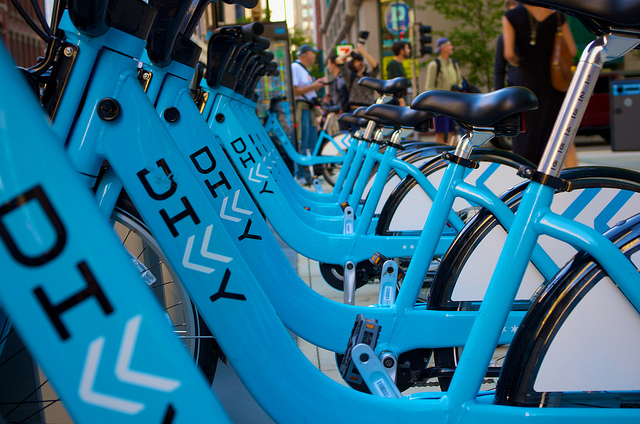Study Shows Why Divvy Has Trouble Reaching People Beyond Its White, Wealthy Base
By Stephen Gossett in News on Jun 27, 2017 6:55PM

The city's bikeshare system is celebrating its fourth birthday on Wednesday (complete with fancy food-themed bikes), but not everyone might feel like joining in the party. A new study that looks at equity in three cities' bikeshare programs, including Divvy, found that residents of color and lower-income would-be riders cited mentioned more barriers of entry than more well-off white residents.
The study, titled "Breaking Barriers to Bike Share: Insights from Residents of Traditionally Underserved Neighborhoods," was released by Portland State University and was partially funded by Better Bike Share Partnership, an organization that has contributed financially to bikeshare outreach to lower-income residents here in Chicago. Researchers looked at neighborhoods in Philadelphia and Brooklyn, along with Bronzeville.
The most significant hurdle for all respondents was concerns about traffic safety. Almost half of those surveyed (48 percent) cited that worry as a "big barrier" to biking, either in terms of bikeshare or biking in general.
That anxiety dovetails with the Chicago numbers in terms of people of color and underserved neighborhoods. The city's long-in-the-works Vision Zero report, released earlier this month, found that deadly crashes disproportionately affect people of color and residents of high-economic-hardship neighborhoods.
Other barriers mentioned in the study included lack of knowledge, liability concerns and high costs of membership. Race and class seem to play an explicit role, too: "Twenty-two percent of lower-income respondents of color stated that a big barrier to riding was that doing so could cause them to be harassed or a victim of crime. This compared to 17 percent of higher-income people of color and 7 percent of higher-income white residents," according to the report.
At the same time, the bikeshare systems showed a significant degree of popularity among these communities, at least in theory. A majority of lower-income people of color (56 percent) said they'd like to use bikeshare more than they do. And nearly three-quarters said the concept was a good fit: seventy-four percent of lower-income respondents of color said bikeshare is "useful for people like me."
The personal touch appears key in terms of outreach, researchers noted:
"While fewer residents received information from more personal sources, such as talking with someone from the bike share outreach program or at a community center or faith-based organization, these sources were correlated with higher rates of intention to use bike share in the future. Residents who received information via more passive modes, such as the bike share station, bus shelter ads, billboards, television, and radio, had lower rates of intention to use bike share."
Divvy has no doubt gained major inroads in making its service more equitable, adding more stations on the South and West Sides (with more overall to come) and introducing a membership-discount program for low-income residents in 2015, among other targeted outreach. Hopefully continued boots-on-the-ground efforts will keep pushing the needle in the right direction.